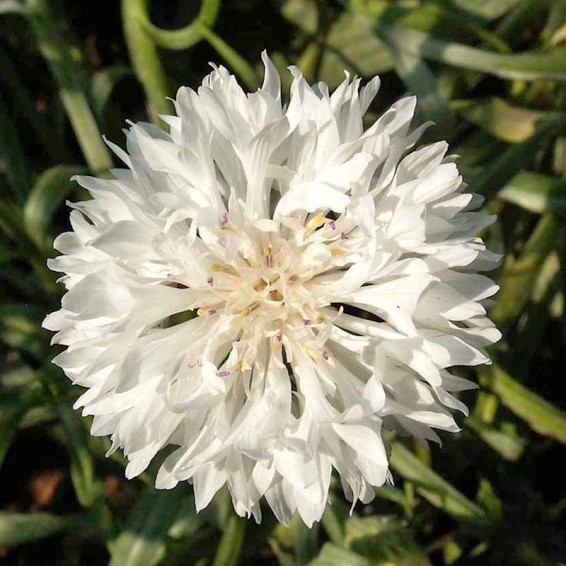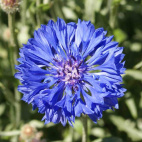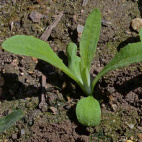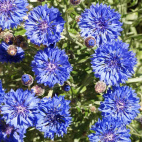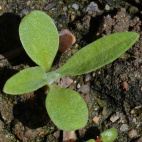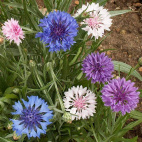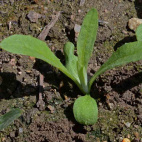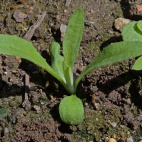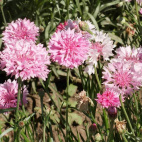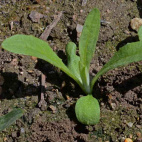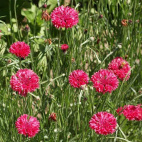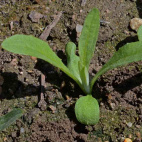Tall White Bachelor Button Cornflower Seeds
Centaurea cyanus
- HOW TO GROW
- FAST FACTS
HOW TO GROW
Sowing: Direct sow in late fall or early spring, planting the seeds thinly and 1/2" deep. In the spring, keep the soil moist after sowing; germination should occur within 7-10 days. To start indoors, plant three or four seeds 1/2" below the surface in individual peat pots. Keep the soil lightly moist and at a temperature of 65-70 degrees F until germination; thin to the strongest seedlings. Transplant the seedlings before they reach a height of 5".
Growing: Water seedlings occasionally until they become established. Mature plants tolerate drought, but prefer adequate moisture and may need occasional watering. Prune off developing tips to force the plant to produce more branches and fuller growth, as well as more flowers. If the stems begin to fall over, provide support. Deadhead spent blossom for the most abundant flowers, keeping in mind that the latest blossoms will need be left in order to produce seed; though an annual, it will reseed easily to produce volunteer plants. This plant attracts butterflies and bees, in addition to providing nutritious seed for birds. Cornflower grows well in containers as well as in the garden.
Harvesting: Cornflowers make excellent cut flowers, and usually have a vase life of 4-5 days. When dried, the flowers retain their color and make a good addition to dried flower arrangements or potpourri. To dry the flowers, choose blossoms that have just begun blooming; pick them as soon as the dew has dried. Bundle the stems and hang them upside down in a well-ventilated, dark place for about 2 weeks.
Seed Saving: After the flower fades, the tiny oblong seeds will form. As soon as the seed can easily be removed, it is mature. Remove the dried seed heads and rub them lightly to separate the seed from the husk. Store the seed in a cool, dry place.
FAST FACTS
Common Names: Bachelor's Button
Latin Name: Centaurea cyanus
Species Origin: Southern Europe
Type: Garden Flowers
Life Cycle: Annual
USDA Zones: 1, 2, 3, 4, 5, 6, 7, 8, 9, 10, 11, 12
US Regions: California, Mountain, Arid/Desert, Plains/Texas, Midwest, Northern, Northeast, Southeast
Seeds per Ounce: 6,000
Stratification: No Stratification
Germination Ease: No Stratification
Sunlight: Full Sun
Height: 30 Inches
Color: White
Bloom Season: Blooms Late Spring, Blooms Early Summer, Blooms Late Summer
Uses: Cut Flowers, Dried Flowers, Deer Resistant
DESCRIPTION
HOW TO GROW
Sowing: Direct sow in late fall or early spring, planting the seeds thinly and 1/2" deep. In the spring, keep the soil moist after sowing; germination should occur within 7-10 days. To start indoors, plant three or four seeds 1/2" below the surface in individual peat pots. Keep the soil lightly moist and at a temperature of 65-70 degrees F until germination; thin to the strongest seedlings. Transplant the seedlings before they reach a height of 5".
Growing: Water seedlings occasionally until they become established. Mature plants tolerate drought, but prefer adequate moisture and may need occasional watering. Prune off developing tips to force the plant to produce more branches and fuller growth, as well as more flowers. If the stems begin to fall over, provide support. Deadhead spent blossom for the most abundant flowers, keeping in mind that the latest blossoms will need be left in order to produce seed; though an annual, it will reseed easily to produce volunteer plants. This plant attracts butterflies and bees, in addition to providing nutritious seed for birds. Cornflower grows well in containers as well as in the garden.
Harvesting: Cornflowers make excellent cut flowers, and usually have a vase life of 4-5 days. When dried, the flowers retain their color and make a good addition to dried flower arrangements or potpourri. To dry the flowers, choose blossoms that have just begun blooming; pick them as soon as the dew has dried. Bundle the stems and hang them upside down in a well-ventilated, dark place for about 2 weeks.
Seed Saving: After the flower fades, the tiny oblong seeds will form. As soon as the seed can easily be removed, it is mature. Remove the dried seed heads and rub them lightly to separate the seed from the husk. Store the seed in a cool, dry place.
FAST FACTS
Common Names: Bachelor's Button
Latin Name: Centaurea cyanus
Species Origin: Southern Europe
Type: Garden Flowers
Life Cycle: Annual
USDA Zones: 1, 2, 3, 4, 5, 6, 7, 8, 9, 10, 11, 12
US Regions: California, Mountain, Arid/Desert, Plains/Texas, Midwest, Northern, Northeast, Southeast
Seeds per Ounce: 6,000
Stratification: No Stratification
Germination Ease: No Stratification
Sunlight: Full Sun
Height: 30 Inches
Color: White
Bloom Season: Blooms Late Spring, Blooms Early Summer, Blooms Late Summer
Uses: Cut Flowers, Dried Flowers, Deer Resistant
Also Consider These:
-
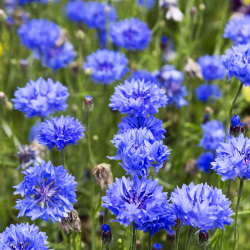 On Sale!
Tall Blue Bachelor Button Cornflower Seeds
Centaurea cyanus
Perhaps the most recognized feature of this annual wildflower is its famous shade of cornflower blue. These easy-to-grow beauties reach a medium height and are at home in every carefree garden.Quick View$3.48 Pkt - $5.96 / Oz
On Sale!
Tall Blue Bachelor Button Cornflower Seeds
Centaurea cyanus
Perhaps the most recognized feature of this annual wildflower is its famous shade of cornflower blue. These easy-to-grow beauties reach a medium height and are at home in every carefree garden.Quick View$3.48 Pkt - $5.96 / Oz -
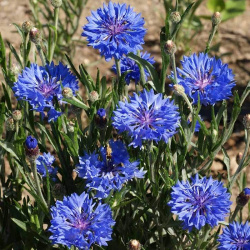 Dwarf Blue Bachelor Button Cornflower Seeds
Centaurea cyanus
Best known for its vivid blue color, this old-fashioned annual wildflower continues to be a favorite. Lovely fresh or dried, this dwarf grows less than a foot tall and works well in small spaces.Quick View$3.48 Pkt - $5.96 / Oz
Dwarf Blue Bachelor Button Cornflower Seeds
Centaurea cyanus
Best known for its vivid blue color, this old-fashioned annual wildflower continues to be a favorite. Lovely fresh or dried, this dwarf grows less than a foot tall and works well in small spaces.Quick View$3.48 Pkt - $5.96 / Oz -
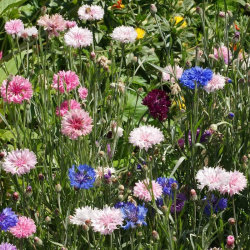 On Sale!
Tall Bachelor Button Cornflower Seed Mix
Centaurea cyanus
Shades of red, white, pink, and blue will brighten any corner of the garden with this favorite old-fashioned annual. The longer stems of this variety are perfect for fresh or dried flower arrangements.Quick View$3.48 Pkt - $5.96 / Oz
On Sale!
Tall Bachelor Button Cornflower Seed Mix
Centaurea cyanus
Shades of red, white, pink, and blue will brighten any corner of the garden with this favorite old-fashioned annual. The longer stems of this variety are perfect for fresh or dried flower arrangements.Quick View$3.48 Pkt - $5.96 / Oz -
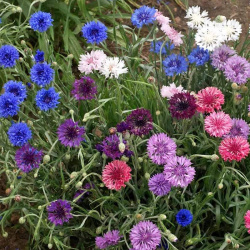 Polka Dot Bachelor Button Seed Mix
Centaurea cyanus
This easy-to-grow favorite annual comes in a bright mix of blue, purple, pink, white, and rose. Excellent for dried flower arrangements or potpourri. The plant is a dwarf, so it is great for gardens with limited space.Quick View$3.48 Pkt - $5.96 / Oz
Polka Dot Bachelor Button Seed Mix
Centaurea cyanus
This easy-to-grow favorite annual comes in a bright mix of blue, purple, pink, white, and rose. Excellent for dried flower arrangements or potpourri. The plant is a dwarf, so it is great for gardens with limited space.Quick View$3.48 Pkt - $5.96 / Oz -
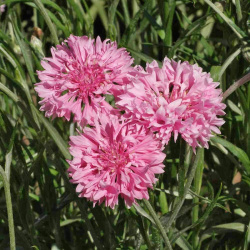 Tall Pink Bachelor Button Cornflower Seeds
Centaurea cyanus
Blushing pink blossoms add beauty and charm to any garden or bouquet. This annual heirloom variety has long stems, so it is perfect for creating fresh or dried flower arrangements.Quick View$3.25 Pkt - $6.67 / Oz
Tall Pink Bachelor Button Cornflower Seeds
Centaurea cyanus
Blushing pink blossoms add beauty and charm to any garden or bouquet. This annual heirloom variety has long stems, so it is perfect for creating fresh or dried flower arrangements.Quick View$3.25 Pkt - $6.67 / Oz -
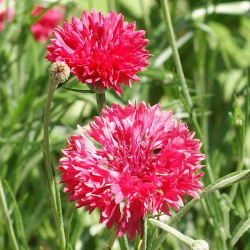 Tall Red Bachelor Button Cornflower Seeds
Centaurea cyanus
Bright as a button, these annual crimson blooms will bring cheer to any occasion. Beautiful for fresh or dried flower arrangements with its long stems.Quick View$3.25 Pkt - $5.96 / Oz
Tall Red Bachelor Button Cornflower Seeds
Centaurea cyanus
Bright as a button, these annual crimson blooms will bring cheer to any occasion. Beautiful for fresh or dried flower arrangements with its long stems.Quick View$3.25 Pkt - $5.96 / Oz





